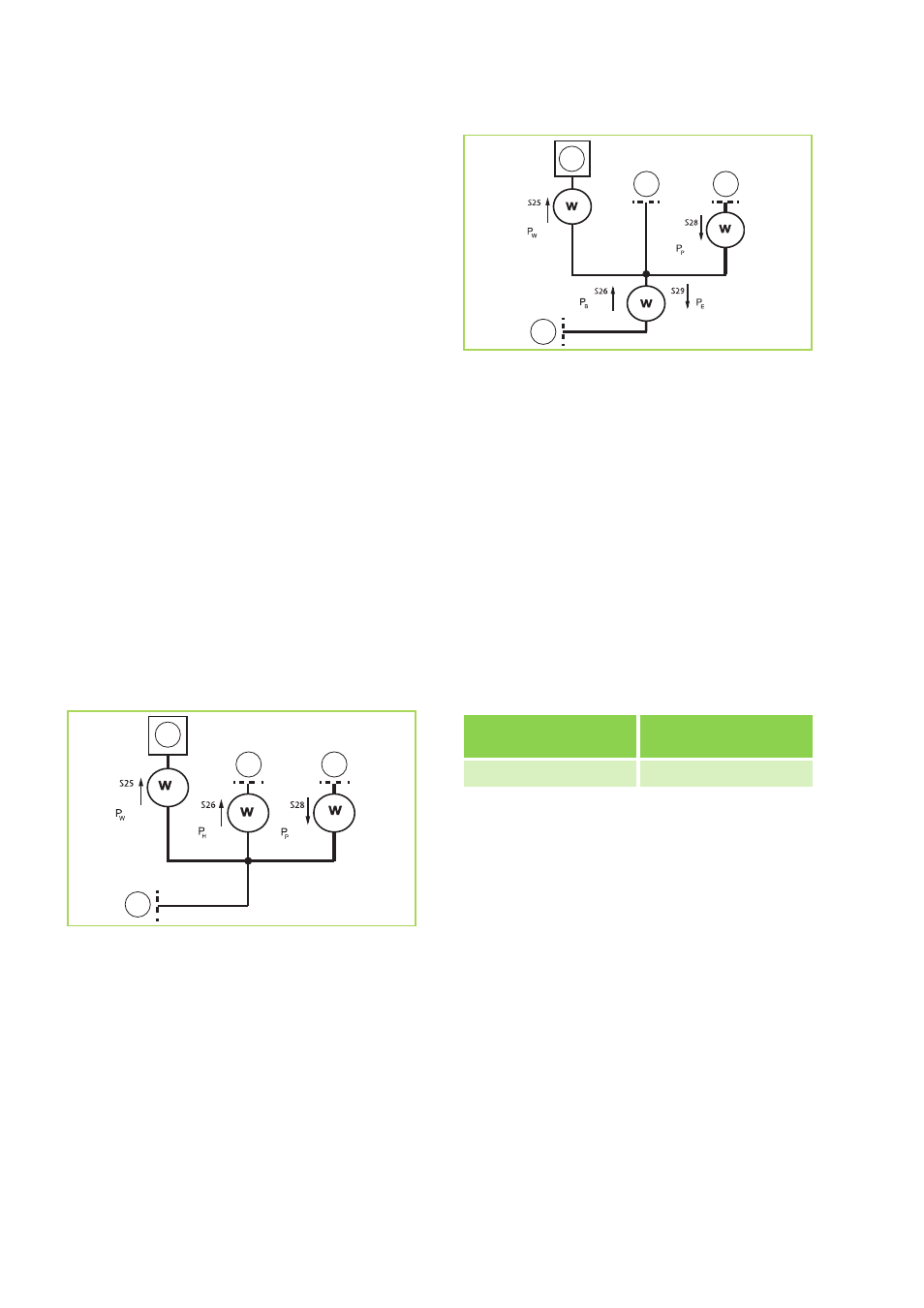2 using the pv power surplus, Remko smart wp-manager, Using the pv power surplus – REMKO WPM-Smart-Control-Manual for users-WKF-180 User Manual
Page 32

5.2
Using the PV power surplus
The self-generated photovoltaic power is used in
the first instance for power needs in the home
(lighting, household appliances, etc.). If more PV
power is produced than is required, it is used to
produce heat with the heat pump, instead of being
fed into the public grid. However, the surplus PV
power is only employed if it is cheaper to use it for
personal use than the returns from the feed-in tar-
iffs. In order to achieve this, the current output of
the PV plant, the actual domestic power consump-
tion and the actual electrical output of the heat
pump are required. Existing electronic electricity
meters with an S0 interface can be used for this
purpose. This assumes that approval has been
granted to do so by the energy supplier. Other-
wise, a privately-owned electricity meter can be
installed for the "PV power utilisation" function.
The impulse rate of the S0 output on the meter or
of the inverter should be at least 500 lmp./kWh. If
the impulse rate of the installed meters is lower
than this, we recommend upgrading the meters to
models with the appropriate impulse rate. The
impulse rate can be set on the controller. Please
also note that on most electricity meters the
impulse rate is entered on the front. However, this
mostly applies to the LED indicator and not for the
S0 output. The impulse rate of the S0 output must
always be taken from the technical documentation
of the meter.
2
1
4
3
Fig. 31: Positioning of privately-owned meters
W: Power meter
1:
Heat pump
2:
Energy supplier
3:
Household
4:
Photovoltaics
P
H
: P-household
P
P
: P-photovoltaics
P
W
: P-heat pump
2
4
3
1
Fig. 32: Positioning of meters provided by a third
party
W: Power meter
1:
Heat pump
2:
Energy supplier
3:
Household
4:
Photovoltaics
P
B
: P-reference
P
E
: P-feed-in
P
P
: P-photovoltaics
P
W
: P-heat pump
The meters are mounted on a top-hat rail. A three-
phase meter is required for the household elec-
tricity, while the heat pump and the PV plant each
require either a one-phase or likewise a three-
phase meter, depending on the model.
WKF/WKF compact
85 and 120
WKF/WKF compact
180
One-phase
Three-phase
The meters for PV generation and reference/feed-
in are always included on PV plants with a per-
sonal use option. Instead a single the bidirectional
meter for reference and feed-in (shown in the dia-
gram) two separate counters for reference and
feed-in can also be used.
The electricity meter for the heat pump power con-
sumption is not strictly necessary, however it can
be added as described above.
Shielded cables with a cable section of at least 0.5
mm
2
must be used for the connection between the
electricity meters and the REMKO controller. A
separate cable must be used for each power
meter, in order to avoid interaction between the
signals.
REMKO Smart WP-MANAGER
32
